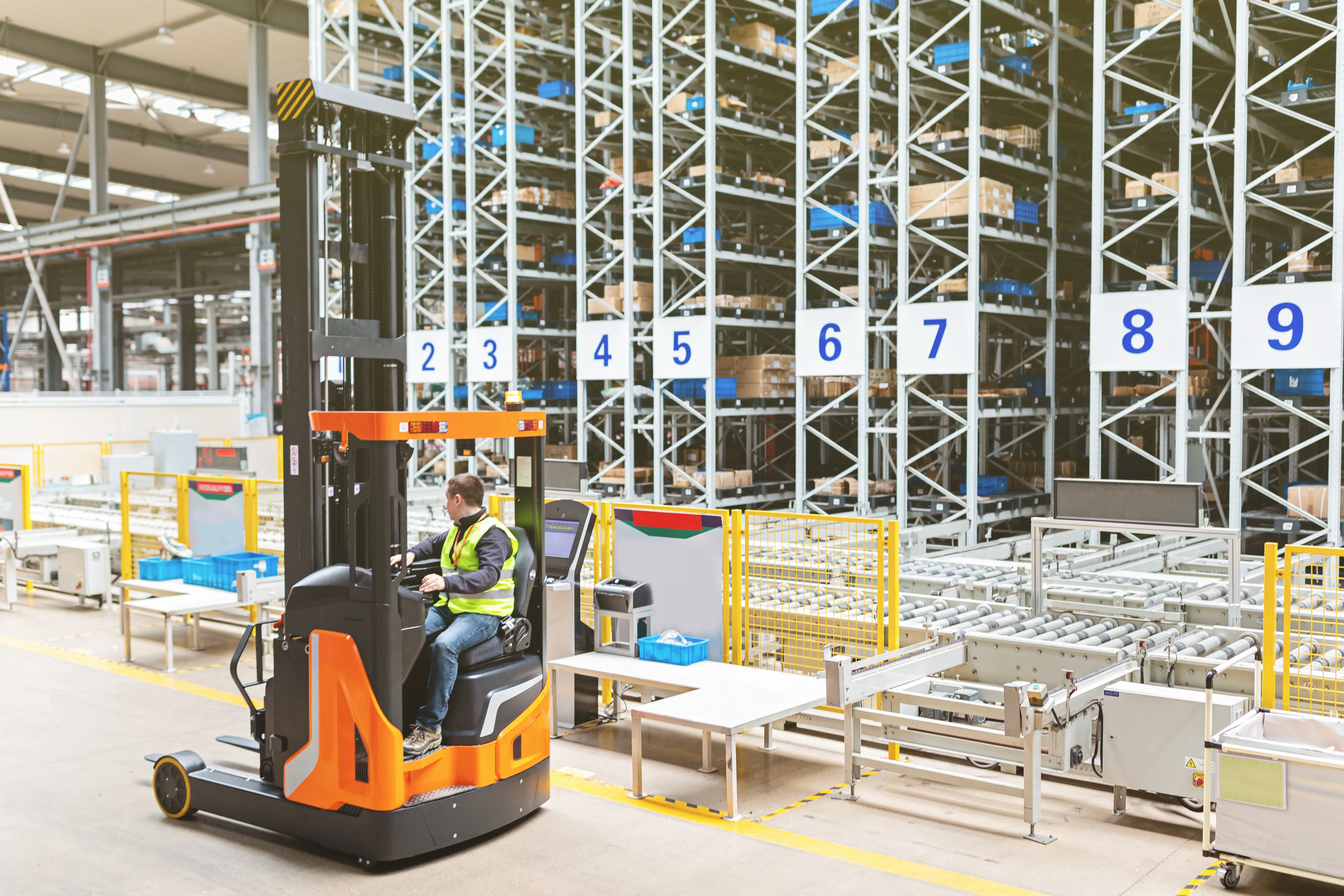‘Free Movement’ and ‘Defined Movement’ in Floor Flatness Assessment

As we already mentioned in previously in our study, in warehouse and industrial design, the performance of the floor is just as important as the equipment and racking it supports. A well-constructed floor ensures material handling equipment (MHE) can operate efficiently, safely, and at design speeds. To match different operational requirements, two main categories of floor surface regularity are recognized: Free Movement (FM) and Defined Movement (DM).
Free Movement Floors
Free Movement areas are zones where vehicles can travel in any direction this “free“ movement is in most cases still reduced to a grid pattern, where vehicles can move up and down along gridlines, so their movement is not defined by one corridor or in a “one way” system. Such areas are typically found, for example in large robotic warehouses with autonomous mobile robots (AMR) as Goods-to-Person systems (e.g. robotic fulfilment centres), in manufacturing plants, or in retail spaces.
Because traffic is unrestricted, the floor must perform consistently across its entire surface. Traditionally, surveys in free movement areas focused on assessing general flatness and levelness through representative samples, ensuring that bumps, slopes, or irregularities remained within acceptable limits for the intended use. Measurements were typically taken on a wider grid - up to three metres - and the results analysed statistically to confirm that most of the floor complied with the specified tolerances. Today, with the use of cutting edge technologies, like Flat4™‘s precise digital surface analysis, this sampling approach can be expanded into a full, high-definition assessment, providing more detailed and comprehensive results with less effort than ever before.
Different classes of FM floors exist, reflecting varying levels of operational demand. A high-class FM floor will allow smoother, faster travel for vehicles, whereas lower classifications may be acceptable for light-duty or low-speed traffic.
Defined Movement Floors
Defined Movement areas are different in that vehicles run only along predetermined wheel tracks, typically in very narrow aisles (VNA) with tall racking systems. Here, the tolerance requirements are much stricter. Even small undulations in the floor can be magnified at height, leading to sway, misalignment of loads, or increased risk of collisions with racking.
Surveys in DM areas focus not on the entire floor but on the exact wheel paths of the equipment. Measurements are taken continuously along these tracks to capture short-distance variations (which can affect stability and comfort), longer-distance slopes (which can cause lean or drift). Additional calculations based on these measurements quantify the rate of change in elevation over short distances (surface twist), providing a detailed understanding of how floor profile changes influence vehicle movements. The results are compared against tolerances that are determined by the dimensions of the MHE and the racking system to be installed, and therefore by the intended lifting height. For example, the ratio between the vehicle’s wheelbase and the racking height indicates the amount of static lean that will occur due to level differences between the left and right wheels - which, in very narrow aisles with racking around 10 metres high, can easily amplify those differences by a factor of ten.
DM standards can vary depending on the type of MHE used. Some operate on three wheels, while others use four; some have longer or wider wheelbases, while others are more compact. These factors all play an important role when assessing how surface irregularities and localised deviations in the floor can influence vehicle stability and positioning accuracy.

Comparing FM and DM
While both FM and DM surveys aim to ensure safe and efficient operations, the scope and stringency of their requirements differ:
Area of focus: FM looks at the floor as a whole, while DM focuses on aisles only.
Measurement approach: FM relies on sampling over a grid, DM requires continuous profiling along a given line
Tolerance: FM tolerances are broader, allowing for some variability; DM tolerances are far more restrictive.
Operational impact: In FM areas, small deviations may increase wear or reduces speed but less often compromise safety (in Goods-to-Person systems they might do). In DM areas, especially where high lifting happens , small deviations can cause significant operational problems that could lead to disastrous outcomes.
Practical Considerations
Most modern warehouses contain a mix of both conditions: free movement spaces for loading, unloading, and packing, alongside defined movement aisles for high racking storage. This overlap makes it important to plan floor specifications carefully.
A common challenge is that racking layouts are not always finalized during construction. In such cases, floors are often built to a reasonably high FM standard, giving the flexibility to upgrade to DM tolerances later with minimal remedial work. This approach avoids costly reworking if narrow aisle racking is added in the future.
Automation adds another layer of complexity. Automated guided vehicles (AGV) and AMR robotic systems require consistent, predictable floor surfaces. They are sensitive to both FM-type conditions, since these robots may roam freely even underneath the racking and across DM-type paths where other robots follow defined routes and load material onto high rackings. These type of hybrid systems are operated with a higher efficiency compared to a traditionally separated systems but it requires a floor quality that is controlled using a combined approach.
Modern technologies such as laser scanning now make it possible to model floors with great precision. Advanced algorithms such as Flat4™ can then analyse the data, sweeping through the surface virtually “inch by inch,” to assess floor regularity across all relevant parameters more quickly and comprehensively than traditional methods.

Conclusion
Free Movement and Defined Movement floor flatness surveys address different but complementary needs: FM ensures consistency for unrestricted vehicle travel, while DM provides precision for fixed-path, high-level storage. Most warehouses combine both, making careful planning vital. Since racking layouts are not always fixed at construction, floors are often built to a higher FM standard, allowing later upgrade to DM with minimal remedial work. Automation adds further complexity, as robots require predictable floors across both conditions. Laser scanning and digital analysis now make it possible to evaluate floors quickly and comprehensively, ensuring long-term efficiency, safety, and adaptability.
We have already discussed the benefits of these new technologies in a previous post, but in a future article we will take a closer look at how advanced FM and DM surveys and reports differ from conventional methods, and the enormous potential they hold for improving accuracy, efficiency, and insight in floor assessment.